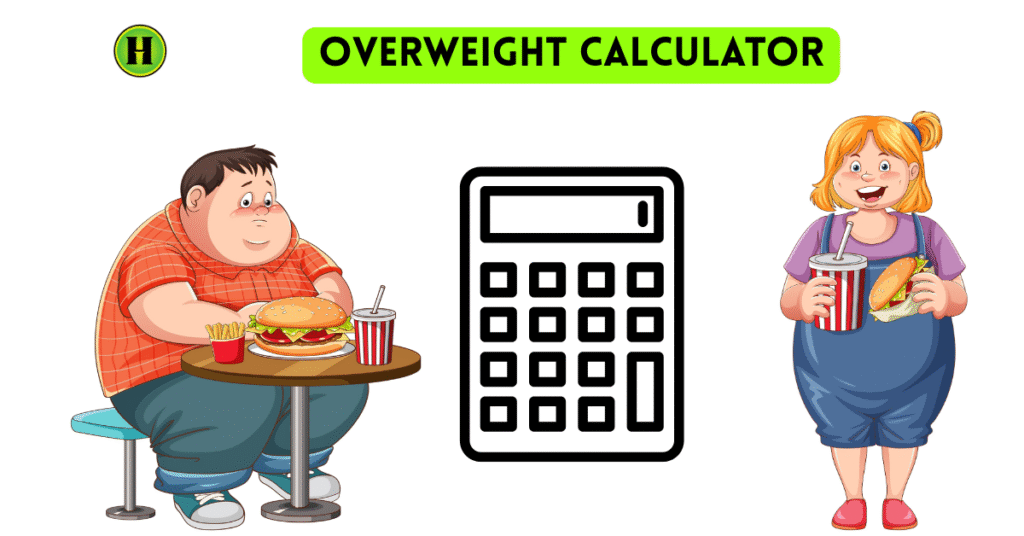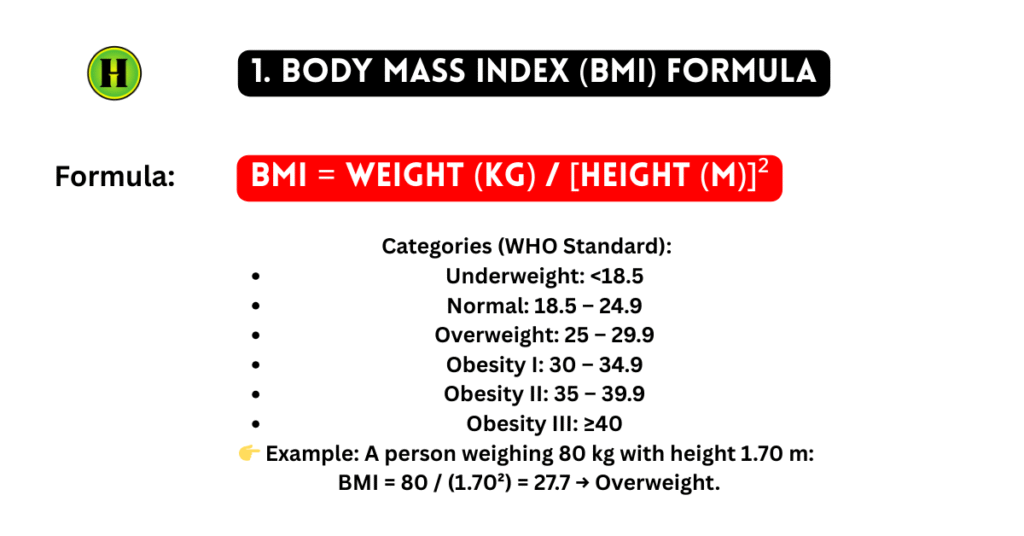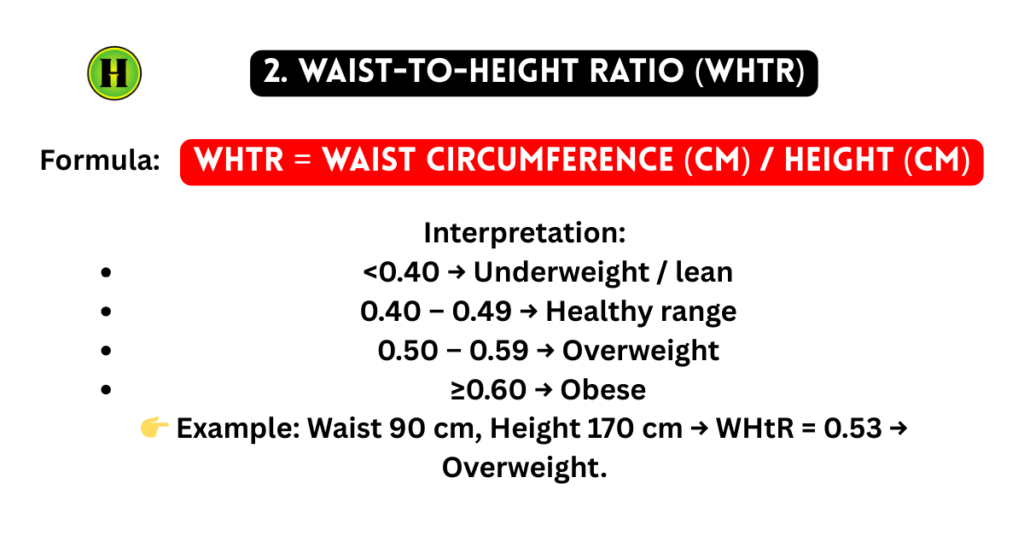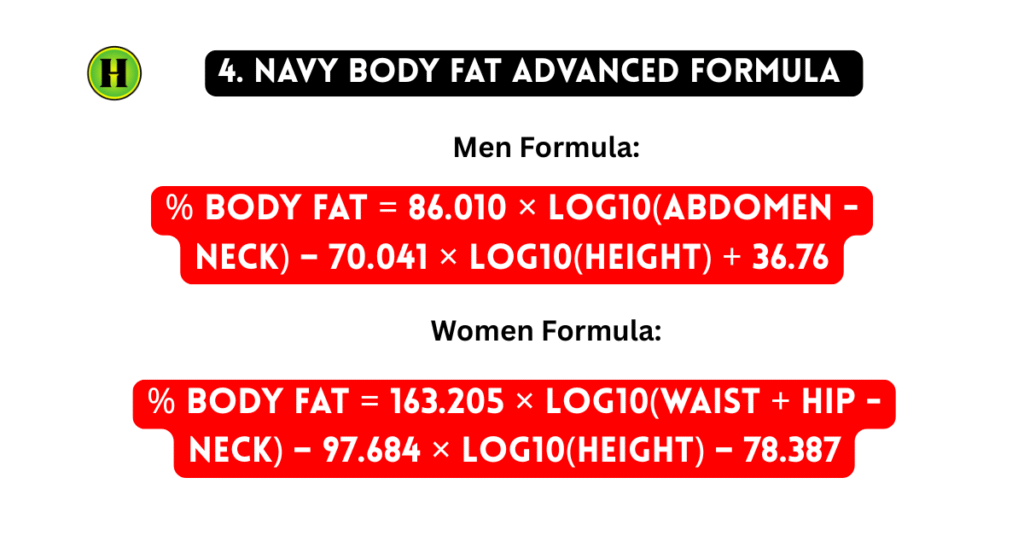Overweight Calculator

Related Body Measurement Calculators
- A Body Shape Index (ABSI) Calculator
- Adjusted Body Weight Calculator
- Body Adiposity Index-BAI Calculator
- Body Fat Calculator
- Body Frame Size Calculator
- Body Shape Calculator
- Body Roundness Index-BRI Calculator
- Body Surface Area-BSA Calculator
- Bedridden Patient Height Calculator
- Face Shape Calculator
- FFMI Calculator (Fat-Free Mass Index)
- Ideal Weight Calculator
- Karvonen Formula Calculator
- Lean Body Mass Calculator
- Overweight Calculator
- Ponderal Index Calculator
- RFM Calculator (Relative Fat Mass)
- Skinfold Body Fat Calculator
- Waist to Hip Ratio Calculator
- Waist to Height Ratio Calculator
- Weight Loss Percentage Calculator
Maintaining a healthy weight is one of the most important aspects of human wellbeing. More body fat always causes health risks related to heart disease, type 2 diabetes, hypertension, joint pains, and reduced life expectancy and more mortality etc.. .This world needs Overweight Calculator for controlling obesity and maintaining good health.
This article explains how our Overweight Calculator works, the formulas it uses, its health implications, and how you can utilize it effectively to improve your lifestyle.
What is an Overweight Calculator?
This Powerful Overweight Calculator provides you with the exact Weight Management solution by giving you the results of obesity levels and cholesterol management metrics, with healthy diet suggestions and exercises.
It is designed to work on various scientific formulas and anthropometric measurements, which are:
- Body Mass Index (BMI) Formula
- Waist-to-Height Ratio (WHtR)
- Waist Circumference Standards
- Navy Body Fat Formula (optional advanced method)
Unlike simply knowing your weight, this overweight calculator puts your weight into context with height, age, gender, and body composition.
Why is Measuring Overweight Important?
Measuring your overweight is important because you may be prone to heart-related risks and It helps in assessing health risks early. It helps you set your fitness goals according to your timings, It prevents chronic diseases, It mainly helps in monitoring progress during weight management.
How Does the Overweight Calculator Work?
1. Body Mass Index (BMI) Formula

2. Waist-to-Height Ratio (WHtR)

3. Waist Circumference

4. Navy Body Fat Advanced Formula

Health Risks of Being Overweight
Being overweight can cause these health conditions:
- Cardiovascular diseases may occur such as (heart attack, stroke).
- Type 2 diabetes is also a significant risk factor.
- People may experience High blood pressure in an overweight condition.
- Sleep apnea is common condition observed by scientists.
- Fatty liver disease is also detected in some individuals.
- Osteoarthritis & joint pain related issues.
- Hormonal imbalances
- Certain cancers (breast, colon, endometrial)
Benefits of Maintaining Healthy Weight
- Better cardiovascular health
- Reduced risk of diabetes
- Improved mobility & flexibility
- Higher energy levels
- Better sleep quality
- Longer life expectancy
Prevention & Management Tips
- Always take Balanced diet of fruits, like apples, berries, grapefruit, pears, bananas, papaya, and vegetables like Spinach, Broccoli, Cauliflower, Cabbage, Zucchini, carrots, cucumber, Bell Peppers (Capsicum), Kale etc…Oats
- Quinoa
- Brown Rice
- Barley
- Whole Wheat
- Foxtail Millet
- Pearl Millet (Bajra)
- Finger Millet (Ragi)
- Barnyard Millet
- Little Millet
- Proso Millet
- Bulgur (Cracked Wheat)
- Amaranth
- Buckwheat
- Rye
- Regular physical activity (150+ minutes per week is mandatory)
- Portion control means managing body fat in different parts of the body, like stomach, butt, legs, hands, neck, etc…
- Reduce sugary drinks & processed foods
- Monitor progress using tools like the Overweight Calculator
- Seek professional help if BMI >30 or other health risks present
FAQs
Not always. BMI doesn’t differentiate between muscle and fat. WHtR and body fat % are more accurate for athletes.
Yes, but they should use age- and sex-specific growth charts.
Overweight = BMI 25–29.9, Obesity = BMI ≥30.
Yes, for predicting risks like heart disease and diabetes.
Every 3–6 months, or more frequently if making lifestyle changes.
Yes, fitness level and body composition matter too.
Yes, metabolism slows with age, increasing risk.
Slightly lower cutoff: Overweight = ≥23, Obesity = ≥25.
Yes, calculators should not be used during pregnancy.
Final Thoughts
The Overweight Calculator is more than a number-crunching professional and advanced tool—it’s a roadmap to better health. By checking BMI, WHtR, and waist circumference, you can understand your weight status, risks, and action steps.
Whether your goal is weight loss, fitness improvement, or disease prevention, this tool helps you stay on track. Use it regularly, combine it with healthy habits, and take proactive steps toward a healthier, longer, and more active life.
References
- WHO Obesity and overweight
- Assessing Your Weight and Health Risk by National Heart , Lung and Blood Institute.
- Waist-to-height ratio as a screening tool for obesity and cardiometabolic risk
- Waist-to-height ratio as an indicator of ‘early health risk’: simpler and more predictive than using a ‘matrix’ based on BMI and waist circumference
- Health risks associated with high waist circumference: A systematic review